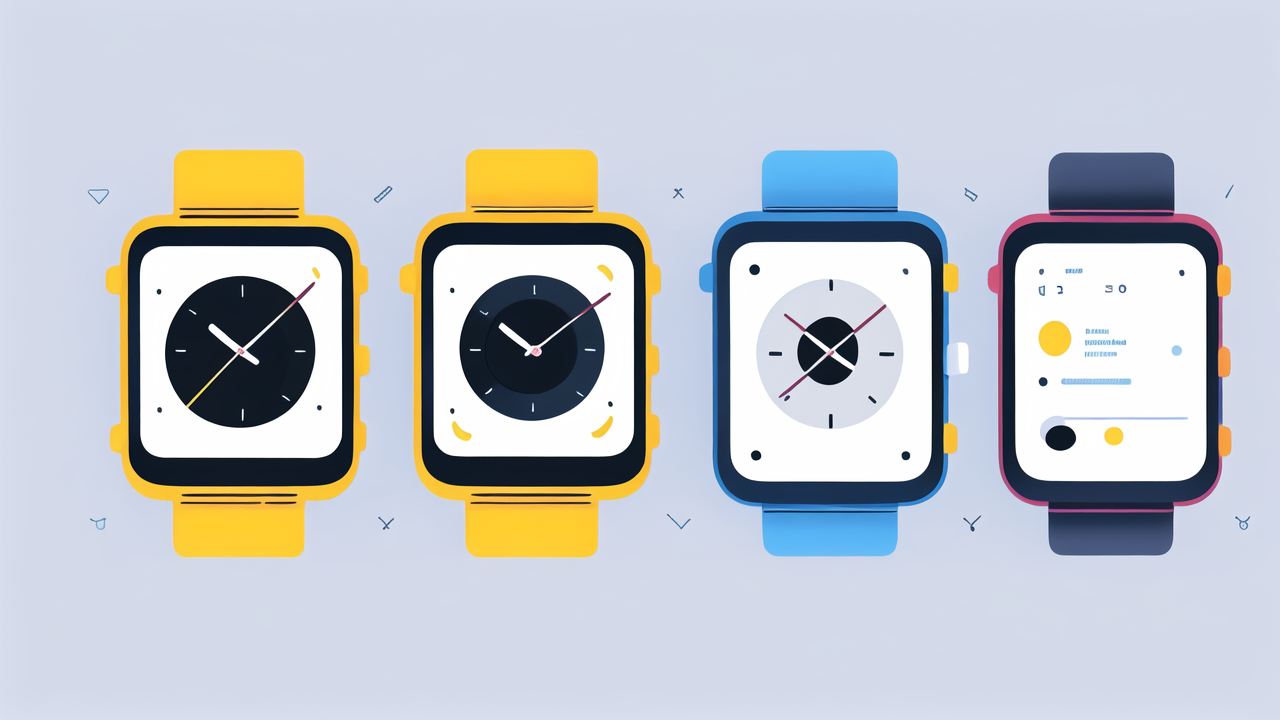Understanding Smart Bracelets: What They Are and How They Benefit Athletes
The Evolution of Smart Bracelets in Fitness and Health
Smart bracelets have come a long way since their inception. They started as simple step counters. Now, they're powerful fitness tools. Early models only tracked steps and distance. Today's smart bracelets do much more.

They monitor heart rate, sleep patterns, and even stress levels. Some can track specific workouts like swimming or cycling. The evolution has been rapid and impressive. Smart bracelets now use advanced sensors and algorithms.
These improvements make them more accurate and useful. They can provide insights that were once only available in labs. Athletes can now track their performance in real-time. This data helps them make informed decisions about their training.
The latest smart bracelets can even detect early signs of health issues. This makes them valuable for both fitness and overall well-being. As technology advances, smart bracelets will likely become even more sophisticated.
Key Features of Top-Performing Smart Bracelets
Top-performing smart bracelets offer a range of features. Here are some key ones to look for:
- Heart rate monitoring: Tracks your pulse during workouts and rest.
- GPS tracking: Maps your routes and measures distance accurately.
- Water resistance: Allows use during swimming or in rainy conditions.
- Long battery life: Ensures the device lasts through long training sessions.
- Sleep tracking: Monitors sleep quality and duration.
- Workout modes: Offers specific tracking for different types of exercise.
- Smartphone notifications: Keeps you connected without checking your phone.
- Stress monitoring: Measures stress levels throughout the day.
These features help athletes track their performance and health. They provide valuable data for improving workouts. Some smart bracelets also offer coaching and goal-setting features.
These can help motivate users and provide guidance. Advanced models may include ECG sensors or blood oxygen monitoring. These features can be especially useful for serious athletes or those with health concerns.
Analyzing the Market: The Best Smart Bracelets for Athletes in the United States
Comparing Top Smart Bracelet Brands
The US market offers many smart bracelet options. Here's a comparison of top brands:

- Fitbit: Known for user-friendly interfaces and long battery life.
- Garmin: Offers advanced GPS features, ideal for runners and cyclists.
- Apple: Integrates seamlessly with iPhones, provides comprehensive health tracking.
- Samsung: Works well with Android devices, offers stylish designs.
- Xiaomi: Budget-friendly options with good basic features.
Each brand has its strengths. Fitbit is great for beginners and casual users. Garmin excels in GPS accuracy and outdoor activities. Apple offers the most polished ecosystem for iOS users.
Samsung provides solid options for Android users. Xiaomi offers good value for those on a budget. When choosing, consider your specific needs and preferences.
Think about which features matter most to you. Also, consider compatibility with your smartphone. Some brands work better with certain phone operating systems.
Features to Look for in a Smart Bracelet for Exercise
When choosing a smart bracelet for exercise, prioritize these features:
- Accurate heart rate monitoring: Essential for tracking workout intensity.
- Water resistance: Important for swimmers or those who sweat a lot.
- GPS tracking: Crucial for runners, cyclists, and outdoor enthusiasts.
- Long battery life: Ensures the device lasts through long workouts.
- Customizable workout modes: Allows tracking of specific activities.
- Real-time data display: Provides instant feedback during exercise.
- Comfortable fit: Ensures the bracelet doesn't interfere with movement.
- Durability: Withstands the rigors of regular exercise.
Also consider features like recovery tracking and VO2 max estimates. These can help optimize your training. Look for devices with easy-to-read displays, especially for outdoor use.
Some smart bracelets offer coaching features. These can provide motivation and guidance during workouts. Consider how the data syncs with your preferred fitness apps.
Good integration can make it easier to track progress over time. Remember, the best smart bracelet is one that fits your specific needs and habits.
Implementing Smart Bracelets into Your Workout Routine
Incorporating Data from Smart Bracelets into Training Programs
Smart bracelets provide a wealth of data. Here's how to use it effectively in your training:

- Set baseline metrics: Use initial data to establish your starting point.
- Track progress: Monitor changes in performance over time.
- Adjust intensity: Use heart rate data to ensure you're training at the right level.
- Optimize recovery: Use sleep and stress data to plan rest days.
- Set realistic goals: Base your targets on your actual performance data.
Start by focusing on one or two key metrics. This could be daily steps, resting heart rate, or sleep quality. As you get comfortable, add more data points to your analysis.
Use the data to identify patterns in your performance. For example, you might notice you perform better after good sleep. This can help you make informed decisions about your training schedule.
Many smart bracelets offer personalized insights. These can help you interpret your data. Remember, the goal is to use the data to improve your workouts and overall health.
Tips and Tricks for Getting the Most Out of Your Smart Bracelet
To maximize the benefits of your smart bracelet, try these tips:
- Wear it consistently: This ensures you get a complete picture of your health.
- Keep it charged: A dead device can't track your activities.
- Update regularly: New features and improvements often come through updates.
- Customize your goals: Set targets that are challenging but achievable.
- Use all available features: Explore beyond just step counting.
- Sync data regularly: This keeps your information up-to-date across all devices.
- Join challenges: Many apps offer community challenges for motivation.
- Review your data weekly: Look for trends and areas for improvement.
Don't get overwhelmed by all the data. Focus on the metrics that matter most to you. Use the smart bracelet's alerts to remind you to move or drink water.
This can help build healthy habits. Remember to calibrate your device regularly for accuracy. Some smart bracelets allow you to input additional data like nutrition.
This can provide a more complete health picture. Lastly, don't forget to celebrate your progress. Use the data to recognize and reward your achievements.




Leave a comment
This site is protected by hCaptcha and the hCaptcha Privacy Policy and Terms of Service apply.